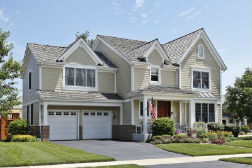 U.S. home prices rose by 0.10 percent in July according to the S&P Case-Shiller Housing Market Index. San Francisco, California edged past Denver Colorado with a year-over-year price increase of 10.40 percent as compared to Denver’s reading of 10.30 percent. All year-over-readings for the 20-City Home Price Index posted gains, but Washington, D.C. showed the lowest year-over0-year growth rate at 1.70 percent. Chicago, Illinois and New York City followed closely with year-over-year readings of 1.80 percent and 1.90 percent respectively.
U.S. home prices rose by 0.10 percent in July according to the S&P Case-Shiller Housing Market Index. San Francisco, California edged past Denver Colorado with a year-over-year price increase of 10.40 percent as compared to Denver’s reading of 10.30 percent. All year-over-readings for the 20-City Home Price Index posted gains, but Washington, D.C. showed the lowest year-over0-year growth rate at 1.70 percent. Chicago, Illinois and New York City followed closely with year-over-year readings of 1.80 percent and 1.90 percent respectively.
Seasonally-Adjusted Home Prices Fall
Although seasonally-adjusted home prices typically rise during the peak home selling season during spring and summer, July’s reports indicated that seasonally-adjusted home prices fell by 0.20 percent in July. Factors including tough mortgage approval requirements and low inventories of available homes likely contributed to slower growth in home prices as demand for homes fell.
Would-be home buyers may also have sat on the sidelines awaiting the Federal Reserve’s decision regarding raising rates. The Fed has not raised rates yet, but may do so in October. Mortgage rates are expected to rise when the Fed raises its target federal funds rate, which is currently set at 0.00 to 0.25percent.
Western Cities Lead Home Price Growth
Case-Shiller reported that as of July, the West continues to see the highest rates of home price growth. Over the past 12 months, only San Francisco and Denver have shown double-digit growth in home prices. Los Angeles, San Francisco and San Diego, California have shown the strongest increases in home prices since 2000.
Home prices for cities included in the 20-City Index have risen 35.70 percent since home prices hit their post -recession low in 2012, but remain 13 percent below the housing bubble’s peak prices. All cities in the 20-City Index posted price gains year-over-year as of July and 14 cities posted higher price gains than for the comparable period ending in July 2014.
Trend: Modest Home Price Growth Continues
The Federal Housing Finance Agency recently posted a year-over-year gain of 5.80 percent for home prices associated with mortgages owned or backed by Fannie Mae and Freddie Mac. This news further supports the trend of moderate gains in U.S home prices; moderate growth in home prices could encourage more moderate-income and first-time home buyers to buy homes, particularly in advance of the anticipated increasein mortgage rates when the Federal Reserve raises interest rates.
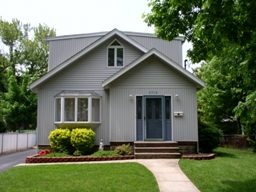 Last week’s scheduled economic news included reports on new and existing home sales, the FHFA House Price Index, weekly reports on mortgage rates, and new jobless claims. The week finished with a report on consumer sentiment.
Last week’s scheduled economic news included reports on new and existing home sales, the FHFA House Price Index, weekly reports on mortgage rates, and new jobless claims. The week finished with a report on consumer sentiment.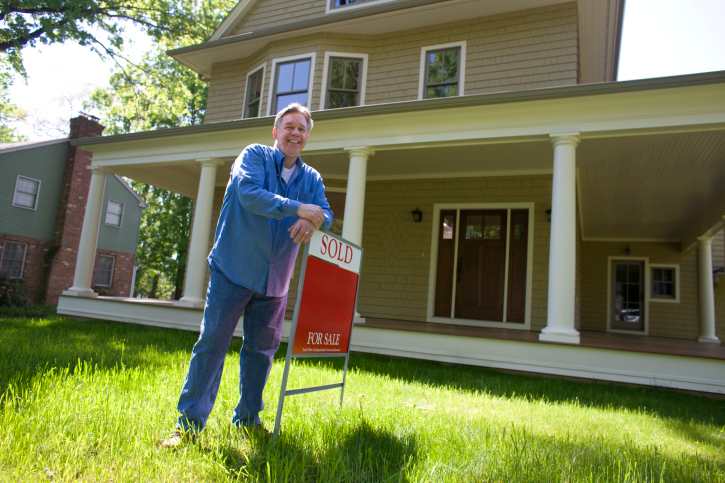 Sales of previously owned homes dropped in August by 4.80 percent on an annual basis for the first time in four months; the dip was likely caused by rising home prices. August sales were reported at a rate of 5.31 million; July’s rate was 5.58 million sales of previously owned homes.
Sales of previously owned homes dropped in August by 4.80 percent on an annual basis for the first time in four months; the dip was likely caused by rising home prices. August sales were reported at a rate of 5.31 million; July’s rate was 5.58 million sales of previously owned homes. Last week’s economic releases included several reports related to housing. The Wells Fargo/NAHB Housing Market Index achieved its highest reading in nearly 10 years. Housing Starts dipped in August and Building Permits issued in August exceeded July expectations. The week’s big news was actually no news. The Fed’s Federal Open Market Committee decided not to raise interest rates. Fed Chair Janet Yellen followed up on the FOMC statement with a press conference and said that the Fed is not yet ready to raise rates, but that a majority of FOMC members are prepared to raise rates before year-end.
Last week’s economic releases included several reports related to housing. The Wells Fargo/NAHB Housing Market Index achieved its highest reading in nearly 10 years. Housing Starts dipped in August and Building Permits issued in August exceeded July expectations. The week’s big news was actually no news. The Fed’s Federal Open Market Committee decided not to raise interest rates. Fed Chair Janet Yellen followed up on the FOMC statement with a press conference and said that the Fed is not yet ready to raise rates, but that a majority of FOMC members are prepared to raise rates before year-end. The National Association of Home Builders (NAHB) / Wells Fargo Housing Market Index reported that home builder confidence rose by one point to a reading of 62 for September. This was the highest reading since November 2005, when the NAHB reported a reading of 68 for home builder confidence. Any reading above 50 indicates that more builders are confident about housing market conditions than those who are not.
The National Association of Home Builders (NAHB) / Wells Fargo Housing Market Index reported that home builder confidence rose by one point to a reading of 62 for September. This was the highest reading since November 2005, when the NAHB reported a reading of 68 for home builder confidence. Any reading above 50 indicates that more builders are confident about housing market conditions than those who are not.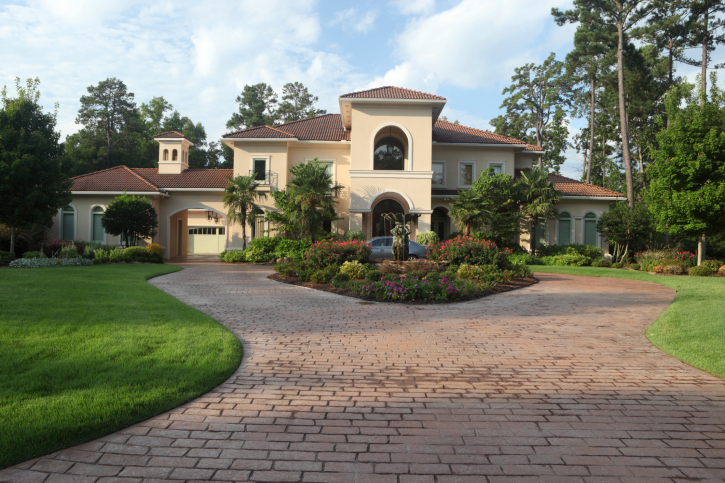 A short week after the Labor Day Holiday provided a slack schedule for economic news. Bloomberg reported that residential investment for the second quarter of 2015 represented 3.34 percent of the Gross Domestic Product. Compared to the long-term average reading of 4.56 percent, analysts said that the Q2 15 reading suggested pent-up demand in the housing market that could help propel the economy through any setbacks that could occur when the Fed raises rates.
A short week after the Labor Day Holiday provided a slack schedule for economic news. Bloomberg reported that residential investment for the second quarter of 2015 represented 3.34 percent of the Gross Domestic Product. Compared to the long-term average reading of 4.56 percent, analysts said that the Q2 15 reading suggested pent-up demand in the housing market that could help propel the economy through any setbacks that could occur when the Fed raises rates. Last week’s economic news included reports on construction spending, private and public sector employment data and a report from the Fed indicating that any move to raise interest rates may be delayed. The details:
Last week’s economic news included reports on construction spending, private and public sector employment data and a report from the Fed indicating that any move to raise interest rates may be delayed. The details: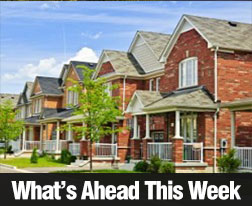 Last week’s economic news included several reports related to housing. The Case-Shiller 20-City Home Price Index for June rose to 4.50 percent as compared to May’s reading of 4.40 percent. Denver, Colorado was the only city to post double-digit year-over-year growth. FHFA also released its House Price Index for June. Home prices for properties associated with mortgages owned or backed by Fannie Mae and Freddie Mac rose at a year-over-year rate of 5.60 percent in June as compared to May’s reading of 5.70 percent.
Last week’s economic news included several reports related to housing. The Case-Shiller 20-City Home Price Index for June rose to 4.50 percent as compared to May’s reading of 4.40 percent. Denver, Colorado was the only city to post double-digit year-over-year growth. FHFA also released its House Price Index for June. Home prices for properties associated with mortgages owned or backed by Fannie Mae and Freddie Mac rose at a year-over-year rate of 5.60 percent in June as compared to May’s reading of 5.70 percent. Denver, Colorado continues to woo homebuyers as home prices rose by 10.20 percent as of June according to the Case-Shiller 20-City Home Price Index. The Mile-High City was the only city included in the index that posted double-digit year-over-year growth in June. San Francisco, California posted a 9.50 percent year-over-year gain in home prices and Dallas, Texas rounds out the top three cities posting highest year-over-year home price growth with a reading of 8.20 percent.
Denver, Colorado continues to woo homebuyers as home prices rose by 10.20 percent as of June according to the Case-Shiller 20-City Home Price Index. The Mile-High City was the only city included in the index that posted double-digit year-over-year growth in June. San Francisco, California posted a 9.50 percent year-over-year gain in home prices and Dallas, Texas rounds out the top three cities posting highest year-over-year home price growth with a reading of 8.20 percent.